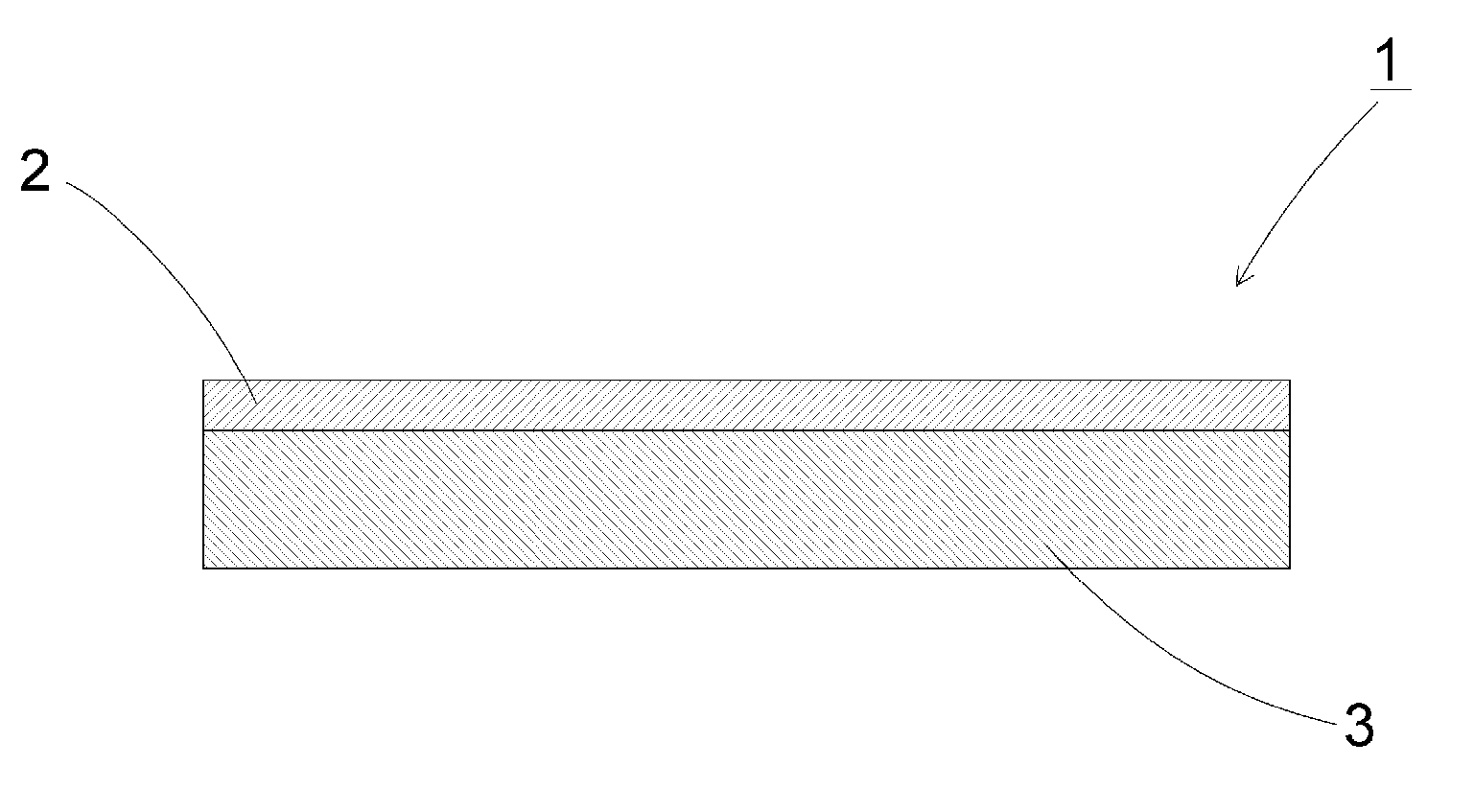[0023]According to the invention claimed in claim 1, since the glass film laminate is constituted by the supporting glass and the glass film, the glass film laminate enhances handling easiness of the glass film when the glass film is subjected to treatments associated with production, and can prevent occurrence of problems such as a positioning error and displacement in patterning. The surface of the glass film and the surface of the supporting glass, which are brought into contact with each other, have a
surface roughness Ra of 2.0 nm or less respectively, and the glass film and the supporting glass are brought into contact with each other with such the smooth surfaces. As a result, the glass film and the supporting glass are in a
close contact, thereby, it is possible to laminate the glass film and the supporting glass firmly and stably without use of
adhesive. No adhesive is used, and hence, when the glass film is incorporated into any of various devices after the treatments associated with production, peeling off even one portion of the glass film from the supporting glass enables easy subsequent peeling off the whole glass film from the supporting glass. In addition, the glass film is free from any remaining adhesive.
[0024]On the other hand, if the
surface roughness Ra exceeds 2.0 nm, the
close contact decreases. As a result, it is not possible to laminate the glass film and the supporting glass firmly without use of adhesive.
[0025]According to the invention claimed in claim 2, since the surface of the glass film and the surface of the supporting glass, which are brought into contact with each other, have a GI value of 1000 pcs / m2 or less respectively, the contacting surfaces of the glass film and supporting glass are clean, leading to undamaged activity of the surfaces. As a result, it is possible to laminate the glass film and the supporting glass more firmly and more stably without use of adhesive.
[0026]According to the invention claimed in claim 3, since the glass film has a thickness of 300 μm or less, even in an ultra-
thin glass film, which is more difficult to
handle and is easily involved in problems such as a positioning error and displacement in patterning, treatments associated with production can be easily carried out.
[0015]The invention according to claim 4 relates to a glass film laminate according to any one of claims 1 to 3, wherein the supporting glass has a thickness of 400 μm or more.
[0028]According to the invention claimed in claim 5, since the difference of
thermal expansion coefficients between the glass film and the supporting glass at 30 to 380° C. falls within 5×10−7 / ° C., even when a heat treatment is carried out during treatments associated with production, a glass film laminate can hardly have a thermal warpage or the like.
[0029]According to the invention claimed in claim 6, since the glass film and the supporting glass are formed by the overflow down-draw method, the surfaces thereof have extremely high in surface precision without being subjected to a
polishing process. As a result, the glass film and the supporting glass can be laminated more firmly.
[0030]According to the invention claimed in claim 7, since the glass film and the supporting glass are laminated so that at least a part of an edge portion includes a step, in the case where the glass film protrudes from the supporting glass, it is possible to peel off the glass film and the supporting glass from each other more easily in a more secure manner. On the other hand, in the case where the supporting glass protrudes from the glass film, it is possible to properly protect an end portion of the glass film from striking, or the like.
[0031]According to the invention claimed in claim 8, since the peeling sheet member is interposed at a partial region of the contact portion between the glass film and the supporting glass, and the sheet member partially protrudes from the contact portion, it is possible to peel off the glass film and the supporting glass from each other more easily in a more secure manner while grasping the protruding portion of the sheet member.
[0032]According to the invention claimed in claim 9, since the supporting glass includes at least one through-hole formed at a position being outside of an
effective surface of the glass film, when the glass film is peeled off from the supporting glass, it is possible to raise up the glass film only by injecting
compressed air or inserting a pin or the like through the through-hole, resulting in easily starting peeling off the glass film.
[0033]According to the invention claimed in claim 10, since the glass film laminate includes a guide member for positioning the glass film on the supporting glass at the glass film side, it is possible to easily position the glass film with respect to the supporting glass when the glass film is laminated on the supporting glass.
[0034]According to the invention claimed in claim 11, since the guide member has a smaller thickness than the glass film, when the glass film laminate is subjected to a cleaning treatment as one of the treatments associated with production, it is possible to prevent a liquid from remaining on the surface of the glass film.
 Login to View More
Login to View More 


